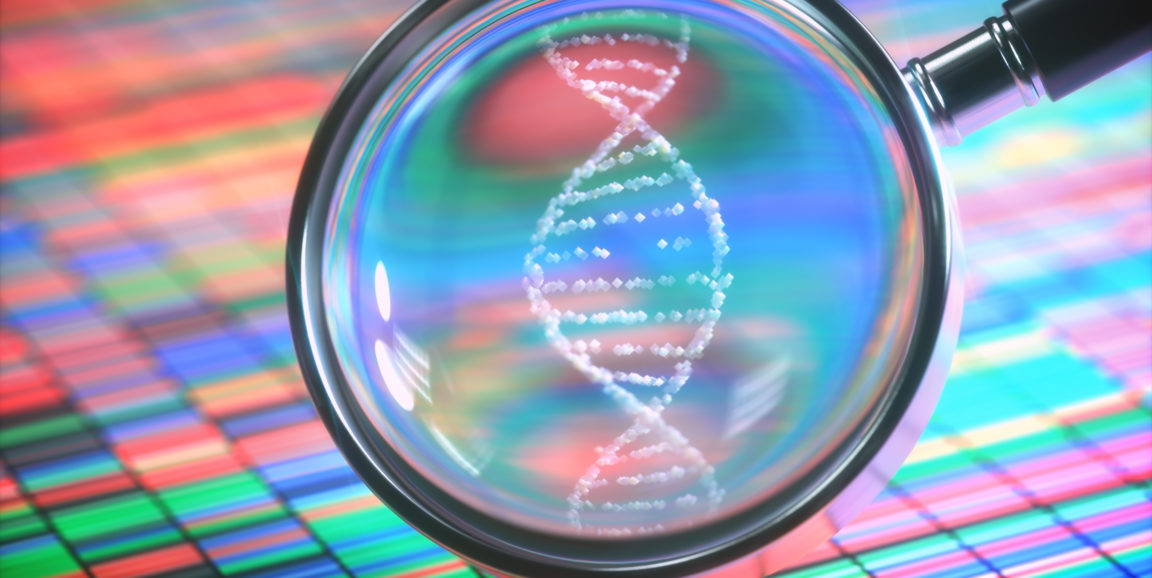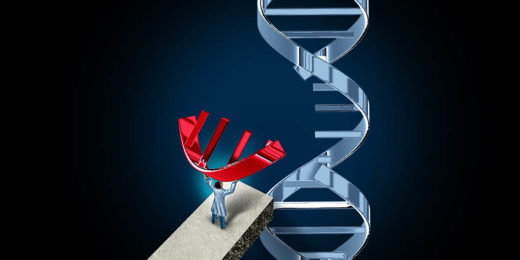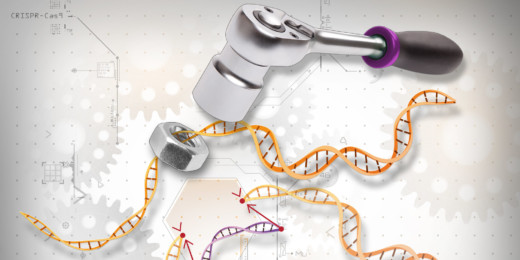Even after decades of research, cancer cells still have secrets to spill. To that end, Stanford Medicine researchers have set out to discover the hidden drivers of cancer's insidious nature.
In a recent study led by Roarke Kamber, a postdoctoral scholar in the lab of Michael Bassik, the team identified hundreds of potential targets for cancer therapies using a new screening strategy that allows for the systematic activation and deactivation of thousands of genes -- molecular instructions that dictate a cell's fate -- in both cancer cells and immune cells.
Powered by a cutting-edge gene-editing technology known as CRISPR, the team discovered a new function for a little-researched gene called APMAP that they're hoping will lead to a new cancer treatment.
Normally, when a pathogen invades the body, the immune system quickly recognizes it as foreign. Part of the immune system known as an antibody latches on to the intruder, marking it with a molecular post-it note that says "Hey! Over here!" which signals to other immune cells, particularly macrophages, that the body needs to rid itself of this new enemy. That process is called phagocytosis -- essentially, a macrophage engulfs and eats the intruder.
Cancer has a particularly nasty ability to disguise itself so that immune cells can't recognize it as "other," and don't attack it. One of the main drivers of this invisibility is a protein called CD47, a molecular signal that scientists often refer to as a "don't eat me" signal. Cancer cells produce CD47, a deceitful signal to macrophages that the cancer cells are friend, not foe, and they don't need to be eaten. Drugs that inhibit CD47 are starting to show promising results in clinical trials, but the treatment is not foolproof and there can be problematic side effects.
"We knew that many cancer cells are still resistant to phagocytosis, even if we block the 'don't eat me' signal," said Kamber." There was a sense there are additional signals out there that have not been discovered. So we set out to find them using systematic screening."
The team published the results in Nature on September 8. Bassik is the senior author of the study and Kamber is the lead author.
A systematic approach
Using CRISPR, Kamber and his team developed a screening method through which they individually deleted or activated each gene in a cancer cell one-by-one as it was exposed to a hungry macrophage. Then, they did the same to the genes of the macrophage to see which genes played a role in gobbling up cancer cells.
"We used CRISPR to remove every gene in the human genome, one by one, to determine which of those genes were required for cancer cells to resist phagocytosis," said Kamber.
If the team removed a particular gene and the cancer cell suddenly became "edible" to a macrophage, they knew they had found a gene that was involved in cancer cell survival.
The team identified hundreds of genes that seemed to play a role in protecting cancer cells from phagocytosis, or conversely, making them more vulnerable to it, including the one that encodes CD47. While much more research is needed to investigate the potential drug targets, the scientists zeroed in on one they found particularly intriguing.
"What was really surprising is that one of the strongest regulators of this process is a gene that's been little studied called APMAP," said Kamber. "The gene has never been linked to phagocytosis regulation before and not too much is known about what it does."
It could be an ideal candidate for a drug because without APMAP, the team found, the cancer cells were very susceptible to phagocytosis. More than 90% of cancer cells were phagocytosed in vitro without APMAP, compared to only 10-15% when the gene is active.
The team wants to pursue APMAP as a therapeutic target for cancer -- small molecules could, in theory, be used to block APMAP from working, said Kamber. Plus, he added, "It appears to have certain advantages in terms of therapy -- it's not required for the growth of normal cells." That means inhibiting APMAP would likely be safe for the body and would not cause the immune system to falsely attack any of its own healthy cells.
In addition to identifying this promising drug target, Bassik emphasized that the CRISPR-based screening strategy could be applied to a wide variety of pressing questions.
"The work not only reveals an exciting new therapeutic target," he said, "it also establishes a general strategy for investigating cell-cell interactions in diverse systems."
Photo by ktsdesign






